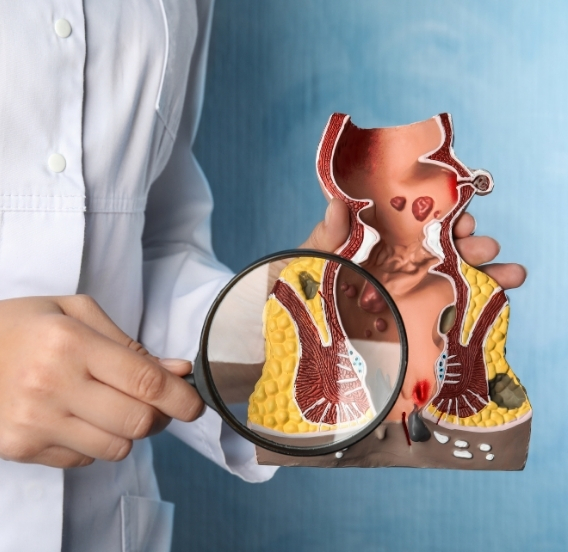How Is Anal Fistula Diagnosed?
The diagnosis is usually made based on the patient’s complaints and the doctor’s physical examination. However, to more clearly determine the location, extent, and relationship with muscles of the fistula, some imaging methods may be needed. These include:
-
Fistulography (contrast X-ray)
-
MRI Fistulography (magnetic resonance imaging)
-
Anoscopy / Rectoscopy (camera examination inside the anus)
How Is Anal Fistula Treated?
Treatment of anal fistula is always surgical. If there is an active infection (abscess), it is first drained, and definitive surgery is performed after the inflammation subsides.
Treatment methods include:
-
Complete removal of the fistula tract
-
Closure of the internal opening with sutures, tissue flap, or clips
-
Seton application (special thread or rubber band)
-
Use of biological glue or fistula plug
-
Internal burning of the tract using laser, radiofrequency, or electrocautery
-
Endoscopic fistula cleaning (fistuloscopy)
During surgery, the muscles controlling the anus may be damaged. In such cases, temporary or rarely permanent issues with gas or fecal incontinence can occur. To minimize this risk, surgeons act very carefully during the operation.
Does Anal Fistula Recur?
Anal fistula can recur in some cases after surgery. Although various modern and traditional treatment methods have been developed, there is still no 100% guaranteed solution.
However, if left untreated, the infection may become chronic, the fistula can enlarge, and become more complex. Therefore, despite the possibility of recurrence, treatment is important.
The Seton method is often preferred because it protects the anal muscles and reduces the risk of recurrence. Less invasive methods can also close and heal the fistula tract.
With new technologies, modern methods such as internal burning of the fistula (laser, RF, electrocautery) and endoscopic treatment can provide painless and faster healing, with success rates comparable to traditional surgeries.


